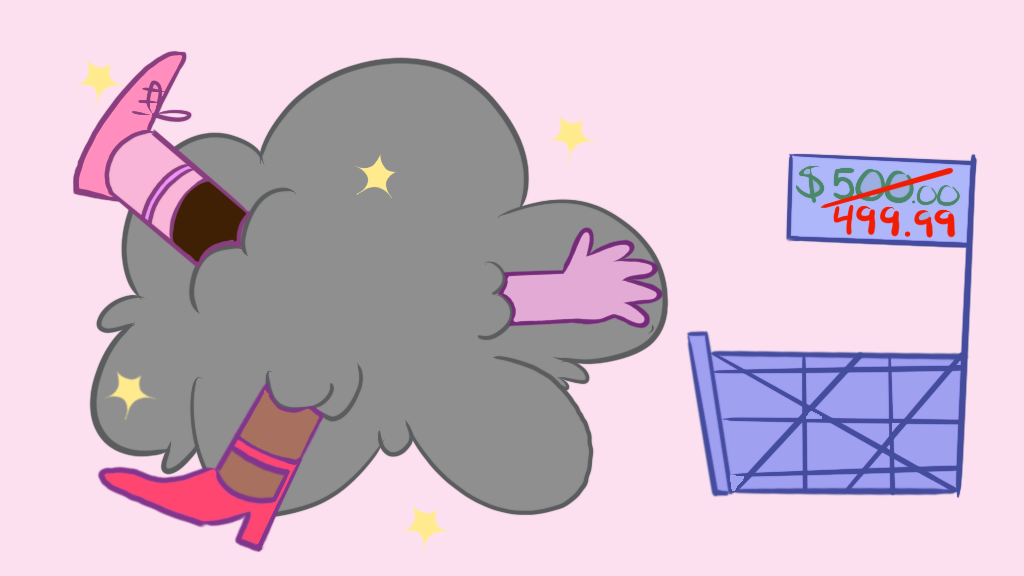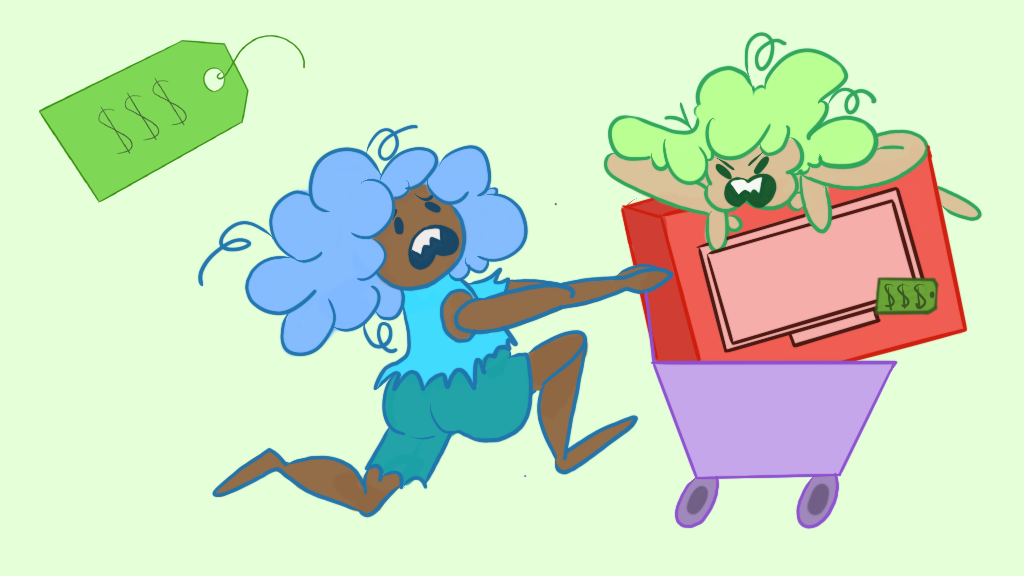The moon shines bright on this late November night. The air is cold, but alive with untold passions. Under the gentle hum of fluorescent lights, laborers hurry to their positions in a preparation for a sacred ritual they know all too well. An unease blankets the atmosphere — an uncertain future lies ahead. It wraps itself around every worker's psyche in its own special way. A mass writhes behind locked doors, slamming up against them mercilessly. Will the thin glass hold?
As the night ages on, the mass begins to grow larger and more impatient. A cacophony of shouts and growls echoes through the storefront, down every aisle. The doors are vibrating under the pressure of the lawless throng's wrath as one thing becomes clear.
It wants in.
As the clock strikes midnight, the doors unlock. Friday has come, and with it a flood of the untamed masses, their eyes ravenous for opportunity. A mother flings her child over her shoulder, grabbing a cart with the other hand. A group of teens laughs maniacally as they bang against the walls, rubberbanding to-and-fro like a spazzed out video game. A woman runs down the aisle with a brand new television, viciously fighting off other customers like wolves over a deer's carcass. A father wanders aimlessly around the store trying to find his lost child. It was his weekend with the kids.
Black Friday is a mess of deals and bargains, with shoppers stampeding stores to take advantage of the best deals. Yet, what many regard as the best shopping day of the year may not be all it's cracked up to be.
Are Deals for Real?
According to Fortune, there are many deals advertised to trick shoppers into believing them to be more significant than they actually are. In some cases, there are no discounts on certain products at all, but a simple “Black Friday Deals” sticker still leads to many additional sales of the item.
In 2017, the rule of thumb was to never settle for less than 37 percent, meaning an item must have been discounted at a minimum of 37 percent to be deemed a good deal. Anything less was comparably mediocre. While the details of this measure varied between product categories, sticking to this general rule allowed consumers to better gauge the value of a given deal.
Doorbuster deals — those that are the most lucrative and apply only to a limited number of items — also tend to sell out within the first few hours. They largely only serve to bring customers in the door. If they’re too late to take advantage of the doorbuster, they still end up buying other items they don’t really want or need. Companies still manage to profit off of doorbusters long after they’ve sold out, all thanks to customer manipulation.
Chaotic Consumers
Beyond the terrible advertising schemes, other horror stories have taken the world by storm. From YouTube videos to friend-of-a-friend style stories, everyone knows how quickly a quick Black Friday outing can turn into a dangerous riot or stampede. Back in 2016, a Reno, Nev. man was fatally shot due to a fight over a parking spot. Yet even with the rise of Cyber Monday, Black Friday sales have not dropped. On the contrary, sales just seem to add on top of one another. More and more money is being fed into the corporate scheme through these psuedo-discounts. Although sales may ebb and flow from year to year, the general trend is still upwards. Are the deals really worth a potential trip to the hospital? According to Laurie Dwyer, senior lecturer in the Saunders College of Business, it’s all a part of a ritual.
“[Black Friday] is sort of the unofficial start of the Christmas season,” said Dwyer. “[But] if you think about it from a consumer behavior perspective, it’s much more than that.”
Like Christmas time, Black Friday sees a lot of shopping. While most would expect the biggest target market for Black Friday deals to be "value shoppers" looking for the cheapest prices, that’s just not the case. Instead, we see treasure hunters — those interested in a specific product — and social shoppers as the most common consumer types. It’s all part of the ritual of things. Shoppers get together with friends and family and make a day out of these deals.
Black Friday Ain't It
Why do we need to follow these rituals, though? Black Friday isn’t worth it.
As much fun as it sounds, I would like to keep my life and limb intact. The deals are often subpar, the shopping process can be dangerous and overall it’s just unnecessary. Most deals can be taken advantage of from the comfort of one’s own home — pants optional!
"As much fun as it sounds, I would like to keep my life and limb intact."
Black Friday in its purest sense is a great idea. Everyone can go out shopping on one day and take advantage of great prices and sales across virtually every consumer industry. It’s been so bastardized, though, that the glitz and glam have faded away. Now, Black Friday is practically a week-long event with many deals being the same, tired recycled promotions from the year before. It’s almost as if stores have stopped trying because they know people will go shopping on Black Friday no matter the quality of the deals. Wow. Imagine that.
Despite it all, people still go shopping en masse on the day after Thanksgiving. It’s almost as integral to American culture as Thanksgiving itself. It’s made the transition from a day of sales to a time-held tradition among the American populace. The spirit of Black Friday, a day of discounts and deals, has gone. Now, friends and family take to the shopping centers, tugging and pulling at the best doorbuster deals in town, all the while blissfully unaware of just how overrated the whole ordeal really is. And for what? The fun of it all?
Maybe that’s really what Black Friday is all about. It’s not about the deals, it’s about the experience. No one makes a casual run to the store the day after Thanksgiving. No, no, no. They go Black Friday shopping — it’s completely different. It’s an event, not an errand. It’s an experience.
And, as Dwyer said, “Consumers crave the experiential.”









